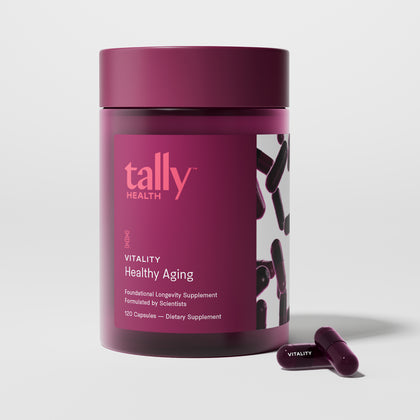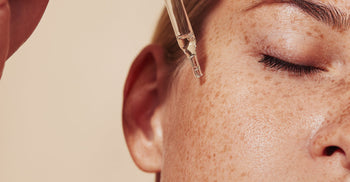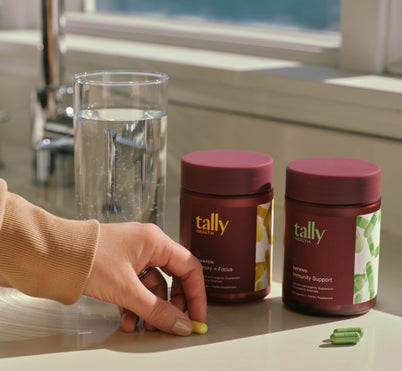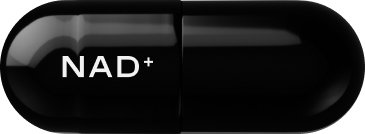

Defining Biohacking: A Personalized Approach to Longevity
Biohacking is broadly defined as biological experimentation undertaken by individuals outside traditional medical or scientific research environments, with the aim of improving the qualities or capabilities of living organisms. It is often characterized as "citizen" or "do-it-yourself" biology, driven by personal curiosity and a desire to understand and gain greater control over one's own biological systems. This practice encompasses a wide spectrum of interventions, ranging from fundamental lifestyle adjustments, such as optimizing diet, sleep, exercise, and even mental health, to more advanced and sometimes controversial methods, including specific supplementation protocols, light therapy, or the use of high-tech wearable devices.
At its core, biohacking represents a science-backed approach to enhancing health and extending longevity, empowering individuals to work with their bodies rather than against them.

Why a "One-Size-Fits-All" Approach Fails: The Need for Sex-Specific Biohacking for Women
A significant challenge within the current biohacking landscape is that much of the existing research and many popular protocols are developed primarily around male biology. This approach frequently overlooks the profound and dynamic role of hormones, the unique nuances of female life stages—such as the menstrual cycle, perimenopause, and menopause—and critical physiological differences inherent to women. The historical focus on male physiology in health research has created a substantial knowledge gap regarding women's specific health needs, leading to a historically pervasive "male default" in health and wellness recommendations.
Consequently, applying male-centric biohacking advice to women can lead to suboptimal or even counterproductive outcomes. For example, certain practices, while potentially beneficial for men, might inadvertently disrupt the delicate balance of female hormones, thereby negating intended benefits or even causing adverse effects. This underscores the paramount importance of adopting a truly sex-specific approach to biohacking to achieve optimal healthspan. Recognizing and addressing these unique biological intricacies is not merely a matter of tailoring advice but a fundamental requirement for effective and safe health optimization for both men and women.
The Biological Blueprint: Understanding Sex-Specific Differences in Aging & Healthspan

Hormonal Balance: Estrogen, Menopause, and Their Impact on the Female Body and Aging
Globally, women consistently exhibit a higher average lifespan than men, a disparity that has even widened in recent years. However, this longevity presents a notable paradox: despite living longer, women frequently experience greater frailty and a higher burden of morbidity in their later years, particularly following menopause. This observation highlights a crucial distinction: merely extending chronological lifespan does not equate to extending healthspan for women. While women tend to live longer than men, they are also more likely to have a longer gap between lifespan and healthspan Likewise, men and women exhibit differential risks regarding specific age-related diseases and conditions.
Estrogen plays a pivotal protective role in premenopausal women, positively impacting cardiovascular and circulatory systems and reducing susceptibility to heart disease compared to men. This protective effect is substantially diminished or lost post-menopause, leading to an increased incidence of hypertension, arterial stiffness, and a higher prevalence of heart failure with preserved ejection fraction. The decline in estrogen during menopause is a critical accelerator of aging at a molecular level. It can accelerate DNA damage, heighten inflammation, and impair mitochondrial function—the cellular "powerhouses" essential for energy production. These molecular shifts are thought to explain why midlife often feels like a significant turning point, impacting mental clarity, emotional resilience, and metabolic stability, even if lifestyle habits remain unchanged.
Beyond cardiovascular and metabolic health, estrogen also influences bone density, with its decline after menopause leading to a marked reduction and increased fracture risk. Furthermore, estrogens have significant effects on skin physiology, delaying aging and offering protection against photoaging. While men also experience important age-related hormonal changes, such as testosterone decline, the abrupt and profound nature of menopause in women presents a distinct and potent challenge to healthspan. This fundamental difference means that biohacking strategies for women must proactively address and mitigate the molecular and physiological consequences of these hormonal shifts, especially around menopause, to truly extend not just years lived, but years lived with vitality.
Genetic & Epigenetic Nuances
The fundamental chromosomal difference—XX in females versus XY in males—provides women with a unique genetic advantage. Having two X chromosomes allows for a compensatory mechanism where cells can often utilize the healthier X chromosome, increasing resilience against gene mutations or defects that might occur on one. This genetic redundancy is posited as a contributing factor to women's generally longer lifespans.
Indicators of biological aging can be generated using "epigenetic clocks," which track changes in DNA methylation patterns — such as Tally Health's next-generation TallyAge Test. Research indicates that the menopausal transition can accelerate these epigenetic age changes. Sex differences in overall aging trajectories, including lifespan, are increasingly linked to fundamental variations in age-related epigenetic modifications. Specific hallmarks of aging, such as genomic instability, telomere attrition (the shortening of protective caps on chromosomes), and the loss of proteostasis (protein balance), exhibit sex-specific patterns. For instance, telomere attrition tends to be faster in males, a difference partly attributed to estrogen's influence on the TERT subunit of the telomerase complex, which maintains telomere length.
Metabolic & Cardiovascular Divergence: Key Physiological Variations Between Sexes
Metabolic profiles show significant sex- and age-related variations. Studies using plasma metabolomics have identified differential metabolites between men and women, with the neurotransmitter acetylcholine showing an especially high differential expression. Other key differential metabolites include specific lipids (PC 36:4) and amino acids (L-threonine, arginine, creatinine, L-methionine, L-tyrosine). Pathway enrichment analysis further reveals significant metabolic pathway differences between sexes, notably in aminoacyl-tRNA biosynthesis, valine, leucine, and isoleucine biosynthesis, tryptophan biosynthesis, and ubiquinone and other terpenoid-quinone biosynthesis. These distinct metabolic profiles are not random but reflect unique underlying physiological processes and vulnerabilities in men and women as they age, effectively serving as sex-specific "metabolic fingerprints" of aging. These specific metabolic shifts likely contribute to, or serve as early indicators of, sex-biased disease risks, reinforcing that what works metabolically for one sex may not be optimal for the other.
While overall protein turnover rates are generally similar between sexes, disparities become more pronounced during periods of significant hormonal shifts, such as puberty and menopause, partly due to differences in fat-free mass.
Cardiovascular aging patterns also diverge significantly. Premenopausal women typically exhibit lower autonomic tone, better baroreceptor response, and superior vascular function compared to age-matched men. However, postmenopausal women develop stiffer arteries than their male counterparts. Men generally have larger left ventricular (LV) mass and wall thickness, but women experience a more accelerated increase in LV wall thickness with age, particularly in the presence of risk factors like hypertension and diabetes. Women tend to maintain a higher LV ejection fraction with age but are more prone to diastolic involvement and a higher incidence of heart failure with preserved ejection function.
Key aging drivers like oxidative stress and inflammation also show sex-specific patterns. Increased reactive oxygen species (ROS) production has been observed in female rat hearts during ischemia/reperfusion compared to age-matched male hearts. Furthermore, "inflammaging"—chronic low-grade inflammation associated with aging—appears to affect males more than females.
The following table summarizes these key biological distinctions that necessitate a tailored approach to healthspan optimization for women:

Tailored Biohacking Strategies for Women's Unique Biology

Nutrition & Supplementation: Fueling Female Vitality for Optimal Cycle Sync
Nutritional requirements are not uniform across sexes, influenced by factors like average muscle mass and distinct hormonal profiles. For example, women over 50 are advised to increase calcium intake due to the decline in estrogen and heightened risk of osteoporosis. Different Recommended Dietary Allowances (RDAs) for various nutrients, such as Vitamin A, Magnesium, and Potassium, exist for men and women, reflecting these physiological differences. While general healthy eating patterns like the Mediterranean diet offer broad benefits, women should specifically monitor how different foods impact their energy levels, mood, and hormonal health throughout their cycles and life stages.
Supplements should be viewed as strategic tools to fill nutritional gaps and enhance, rather than replace, robust foundational habits. Targeted supplements, such as magnesium and omega-3s, can specifically support hormonal balance, stress resilience, and cognitive function in women.
Vitality by Tally Health exemplifies a science-backed supplement designed to target the molecular hallmarks of aging relevant to women's healthspan. Its advanced formula combines five key scientifically validated ingredients: Calcium alpha-ketoglutarate (AKG), quercetin, trans-resveratrol, fisetin, and spermidine. These compounds are specifically chosen to address critical aging hallmarks and processes, including inflammaging, cellular senescence (accumulation of "zombie" cells), mitochondrial efficiency, and autophagy (cellular self-cleaning processes), thereby supporting overall energy and cellular function.
Each ingredient in Vitality by Tally Health plays a distinct role:
Alpha-Ketoglutarate (AKG) is a core metabolic intermediate vital for energy metabolism and epigenetic regulation. Preclinical studies show it extends lifespan and healthspan, partly by reducing systemic inflammation and maintaining stem cell function. Exciting human studies are emerging, indicating its potential for age-related diseases and even epigenetic age reversal.
Quercetin , a natural flavonoid found in fruits and vegetables, possesses potent antioxidant and senolytic properties, aiding in the selective clearance of senescent cells and reducing inflammaging.
Trans-Resveratrol , a plant polyphenol, mimics certain effects of caloric restriction, enhancing mitochondrial biogenesis and cellular resilience.
Fisetin acts as a natural senolytic, effectively removing dysfunctional cells that accumulate with age, reducing age-related inflammaging.
Spermidine , a polyamine, is linked to lifespan extension in multiple model organisms and, in epidemiological studies, to reduced mortality risk in humans. It is a potent inducer of autophagy.
Tally Health's commitment to rigorous criteria—requiring individual ingredients to be safe, well-tolerated, target established hallmarks of aging, and demonstrate published longevity benefits in peer-reviewed animal data—ensures a high-quality, effective formulation. The synergistic blend of these ingredients in Vitality by Tally Health is designed to address multiple aging mechanisms simultaneously, supporting overall energy, cognitive function, and cellular resilience. This targeted support is particularly relevant for women, as their unique biological shifts, such as those experienced during menopause, profoundly impact mitochondrial function, inflammation, and cellular health. By addressing these fundamental biological processes, Vitality aligns with a comprehensive and personalized approach to women's healthspan optimization. This approach bridges the gap between foundational healthy habits and advanced molecular support, offering precise, evidence-based reinforcement for cellular health.
Movement & Exercise: Optimizing Physical Activity for Female Physiology

While regular exercise is universally beneficial for longevity, the physiological responses to exercise can differ significantly between sexes, particularly in older populations. For instance, males often show greater absolute gains in upper and lower body strength and muscle size following exercise interventions.
A crucial consideration for women is their menstrual cycle, which directly impacts energy levels, metabolism, and physical performance. This highlights the benefit of adopting a hormone-aware approach to nutrition and training. For example, strength training might feel more manageable and effective during the follicular phase, while the luteal phase may call for lighter activities and increased recovery. Consistent movement, encompassing both strength training and cardiovascular exercise, is fundamental for supporting mental and physical well-being. Zone 2 cardio training can enhance mitochondrial strength; however, some evidence suggests its benefits for mitochondrial function might be less pronounced in women compared to men.
Stress, Sleep, and Recovery: Foundational Pillars for Hormonal Health and Resilience

For women, prioritizing both the quality and duration of sleep is a critical factor for optimizing energy levels, mood stability, and maintaining crucial hormonal balance. Inadequate sleep can exacerbate hormonal disruptions, impacting overall well-being.
Mindfulness practices and breathwork are indispensable tools for regulating stress. Chronic stress can profoundly disrupt hormonal equilibrium, impacting overall health and long-term well-being. Effective stress management is particularly vital for women, given their heightened sensitivity to cortisol fluctuations.
Advanced Biohacks: Considerations and Cautions for Women

The application of advanced biohacking techniques requires careful consideration, especially for women, due to their unique physiological responses.
Cold & Heat Therapy May Alter Hormone Balance
Cold therapy, such as cryotherapy or cold showers/tubs, can be a potent biohack for resetting the nervous system, boosting metabolism, reducing inflammation, and accelerating recovery. However, as a form of hormetic stress, it carries the potential to disrupt hormonal balance in women. The intensity and timing of such stressors are critically important. A woman's physiological response to cold fluctuates throughout her menstrual cycle; during the luteal phase, characterized by higher progesterone levels and a natural rise in core body temperature, cold exposure can feel more intense, and warming up afterward may be more challenging. Experts recommend initiating cold therapy only after foundational health habits are well-established and gradually easing into the practice, adjusting protocols based on individual cycle and how one feels.
Sauna therapy, utilizing heat as a healing tool, offers benefits such as improved cardiovascular health and reduced inflammation. Similar to cold therapy, women may respond differently to heat than men, potentially sweating less or taking longer to cool down. Therefore, adjusting session length and frequency based on their cycle and recovery needs is advisable.
Intermittent Fasting & Fasted Workouts May Impact Hormone Levels
These practices, particularly skipping breakfast, can lead to elevated cortisol levels. Women are notably more sensitive to cortisol fluctuations due to their intricate hormonal profiles. Exercising in a fasted state, akin to intermittent fasting, can disrupt hormone levels, especially for women experiencing high stress or those with sensitive menstrual cycles. It is generally recommended for women to adequately fuel their bodies before engaging in intense workouts. The application of hormetic stressors like cold therapy and fasting requires sex-specific dosing and timing; what constitutes a beneficial stressor for men might be an overstressor for women, potentially negating intended benefits. Furthermore, fasting can make it difficult to get enough nutrients - like calcium and protein - that are important for muscle and bone health.
Light Exposure & Wearables May Promote Better Sleep and Better Health
Daily morning exposure to natural sunlight is a simple yet powerful biohack that helps regulate circadian rhythm, optimize hormone production, and enhance metabolism, leading to improved sleep and energy. Conversely, wearing blue light-blocking glasses after sunset can signal the body to wind down, promoting restful sleep. Wearable devices, such as Oura rings, provide valuable biometric data on sleep patterns and physical activity, enabling personalized insights into one's health. Continuous Glucose Monitors (CGMs) are also emerging as relevant technologies for personalized metabolic insights.
Other Advanced Techniques
Some biohackers incorporate highly specialized and often expensive techniques into their routines. These include extensive oral hygiene routines, Pulsed Electromagnetic Field Therapy for brain training and meditation, hyperbaric oxygen chambers, devices for oxygen delivery, and even plasma removal for detoxification. While these advanced techniques are intriguing, it is crucial to note their significant cost and the varying levels of robust, peer-reviewed scientific evidence specifically demonstrating their long-term benefits for women, particularly compared to more foundational and accessible practices. It is important to prioritize foundational health habits—such as adequate sleep, whole-food nutrition, regular physical activity, and effective stress management—as the essential bedrock of biohacking. More advanced or expensive "hacks" should ideally build upon this robust base, as neglecting these foundational habits while pursuing advanced biohacks is unlikely to yield significant, sustainable results and could even be counterproductive.
The following table provides a comprehensive overview of biohacking practices, distinguishing between those generally recommended for women and those that require caution or specific adaptation:
Conclusion: Empowering Women to Thrive with Personalized Biohacking

Effective biohacking for women necessitates a departure from generic, male-centric protocols, embracing instead a deeply personalized, science-backed approach that honors their unique biology, particularly their intricate hormonal cycles and distinct life stages. The foundational understanding of inherent biological differences between sexes—including hormonal, genetic, metabolic, and cardiovascular variations—serves as the critical basis for developing truly effective and safe healthspan strategies.
The analysis underscores the power of adopting tailored approaches to nutrition, movement, stress management, and sleep optimization. It also highlights the careful consideration and adaptation required for advanced biohacks like cold/heat therapy and intermittent fasting, acknowledging their potential benefits when applied judiciously for female physiology. These hormetic stressors, while beneficial in principle, require sex-specific dosing and timing to avoid detrimental hormonal disruptions. Furthermore, the report emphasizes that foundational health habits are paramount; advanced biohacks should complement and amplify, rather than replace, a robust physiological baseline.
Scientifically formulated products like Vitality by Tally Health offer targeted, evidence-based support to complement these personalized lifestyle efforts. With ingredients designed to address key hallmarks of aging at a cellular level, Vitality aims to help women optimize their healthspan and maintain vitality as they age. This approach provides a sophisticated layer of molecular support, particularly relevant as women navigate age-related and hormonal shifts.
Ultimately, empowering women to thrive involves making informed decisions about their health journey. This requires not only an understanding of their unique biological blueprint but also a commitment to personalized strategies, ideally in consultation with healthcare professionals, to ensure a safe, effective, and sustainable path to optimal longevity.
What is biohacking?
Biohacking is a personalized approach to health that involves biological experimentation outside of a traditional lab setting, with the goal of improving an individual's physical and mental performance, health, and longevity. It can include lifestyle adjustments like optimizing diet, sleep, and exercise, as well as more advanced methods.
Why is a "one-size-fits-all" approach to biohacking a problem?
A "one-size-fits-all" approach fails because much of the research and many popular protocols are based on male biology. This overlooks the significant role of hormones, unique life stages (like the menstrual cycle and menopause), and other physiological differences unique to women. Applying male-centric advice to women can lead to suboptimal or counterproductive results.
What are some key biological differences between males and females that affect aging?
Key biological differences include hormonal profiles (estrogen's protective role in women before menopause, and the profound loss of it afterward), genetic advantages (XX chromosomes providing a compensatory mechanism in women), and distinct metabolic and cardiovascular aging patterns. For example, women tend to have a longer lifespan but often experience greater frailty later in life, highlighting the difference between lifespan and healthspan.
Recommended Supplements
Citations
Medoro et al. Targeting senescence, oxidative stress, and inflammation: quercetin-based strategies for ocular diseases in older adults. Clin Interv Aging 2025.
Ijima et al. Fisetin reduces the senescent tubular epithelial cell burden and also inhibits proliferative fibroblasts in murine lupus nephritis. Front Immunol2022.
Gyanwali et al. Alpha-Ketoglutarate dietary supplementation to improve health in humans. Trends Endocrinol Metab 2022.
.Eisenberg et al. Induction of autophagy by spermidine promotes longevity. Nat Cell Biol 2009.
Shaito et al. Resveratrol-Mediated Regulation of Mitochondria Biogenesis-associated Pathways in Neurodegenerative Diseases: Molecular Insights and Potential Therapeutic Applications. Curr Neuropharmacol 2023.
Dela Justina et al. Sex Differences in Molecular Mechanisms of Cardiovascular Aging. Front Aging 2021.
Fiala and Brázdová. A comparison between the lifestyles of men and women--parents of school age children. Cent Eur J Public Health 2000.
Fischer and Riddle. Sex Differences in Aging: Genomic Instability. J Gerontol A Biol Sci Med Sci 2018.
Hägg and Jylhävä. Sex differences in biological aging with a focus on human studies. Elife 2021.
Fritz García et al. Sex as a biological variable in ageing: insights and perspectives on the molecular and cellular hallmarks. Open Biol 2024.
Xie et al. Gender - and age-related differences in plasma metabolic fingerprinting of healthy populations. Research Square 2023.
Merz and Cheng. Sex differences in cardiovascular ageing. Heart 2016.
Markofski and Volpi. Protein metabolism in women and men: similarities and disparities. Curr Opin Clin Nutr Metab Care 2011.
Yousefzadeh et al. Fisetin is a senotherapeutic that extends health and lifespan. EBioMedicine 2018.











